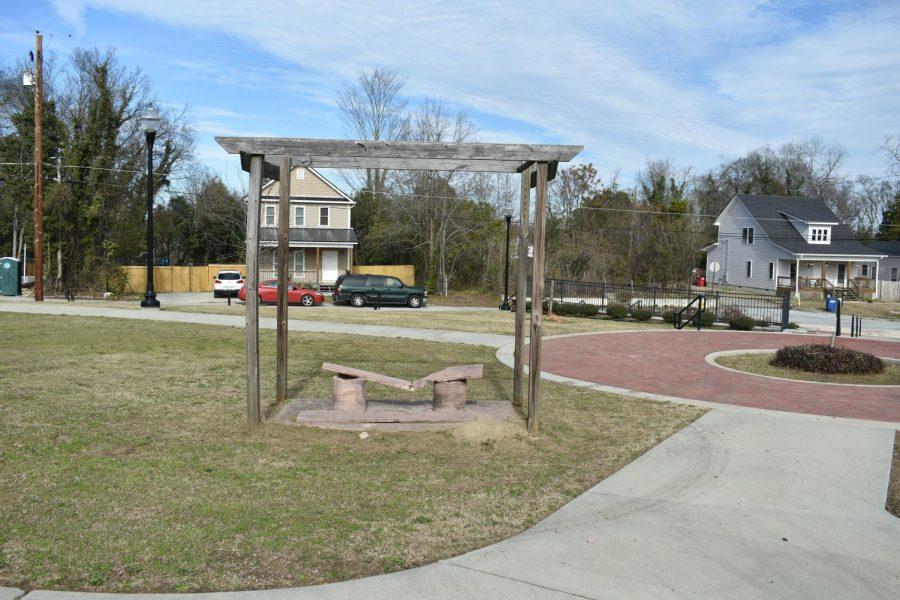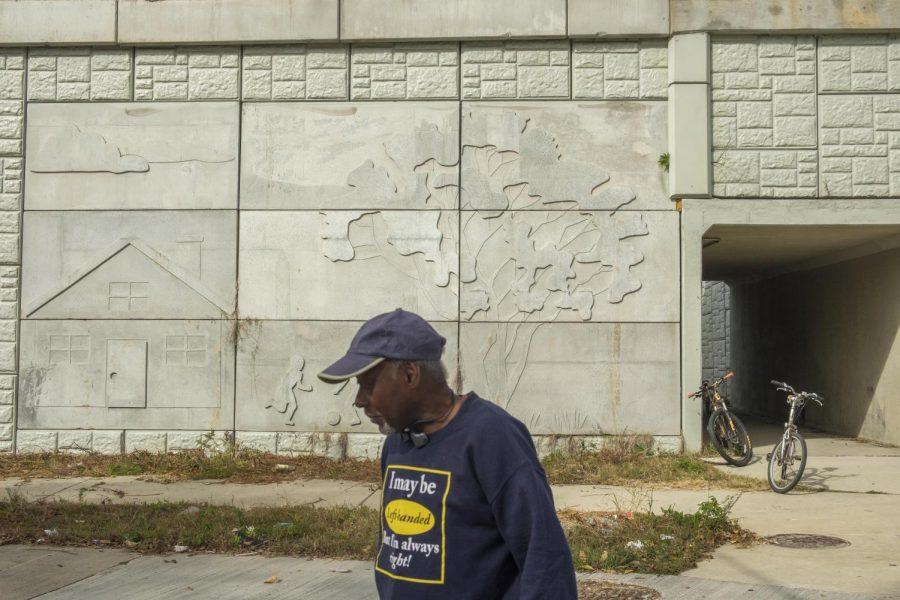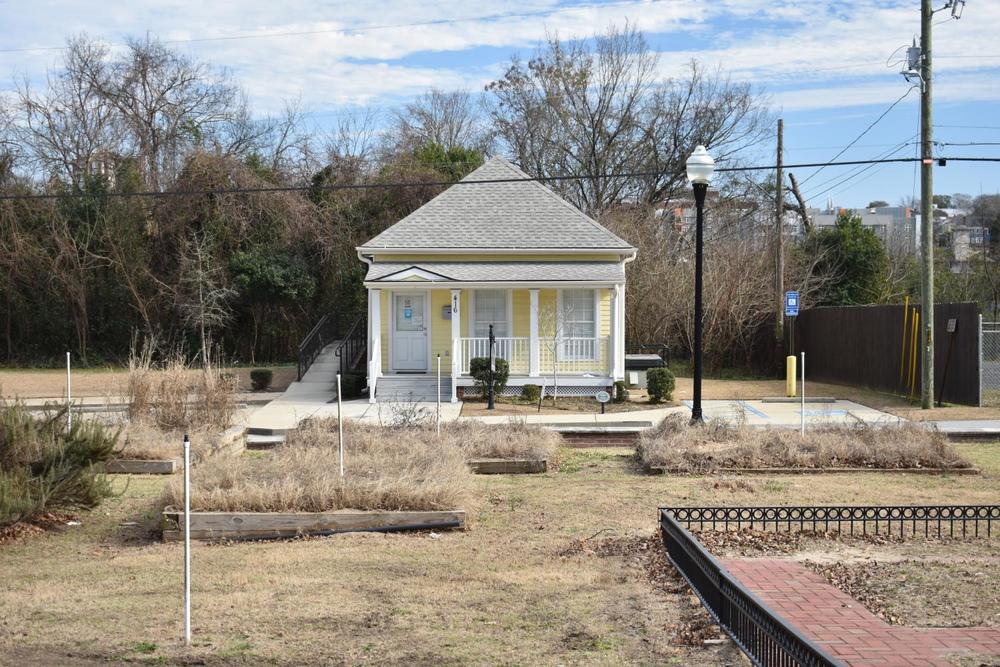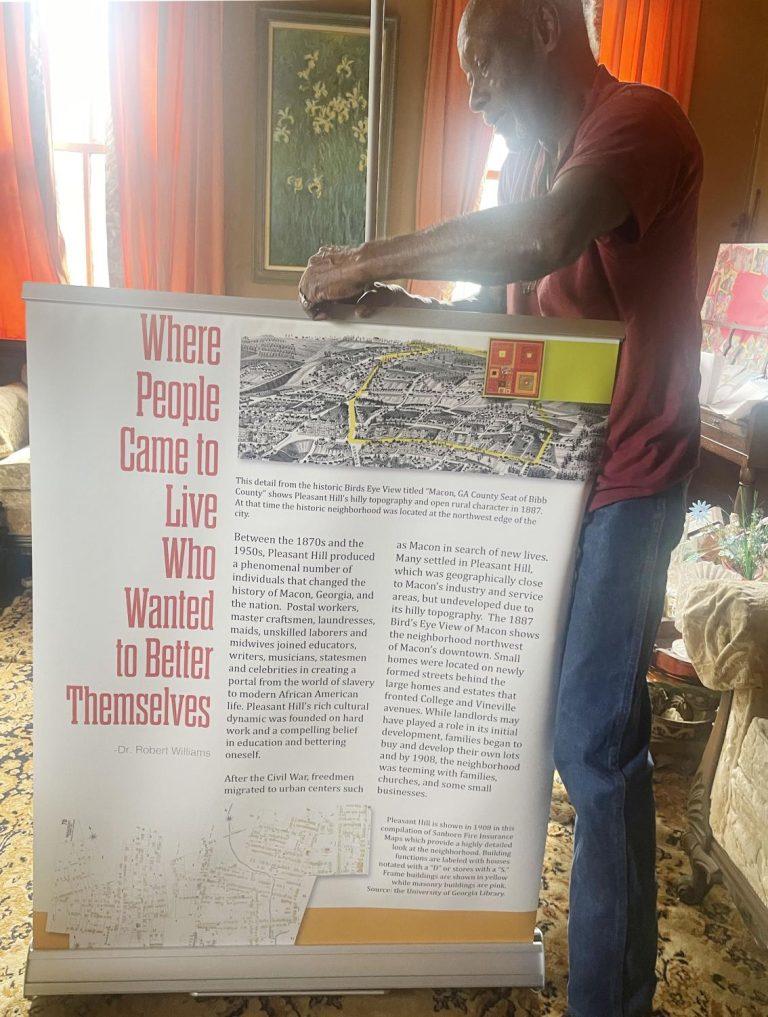
Caption
Peter Givens stands near the entrance of a pedestrian bridge over Interstate 75 that connects the west an east sides of the Pleasant Hill neighborhood. The neighborhood was severed in the ’60s with the construction of Interstate 75.
Credit: Grant Blankenship / Georgia Public Broadcasting






